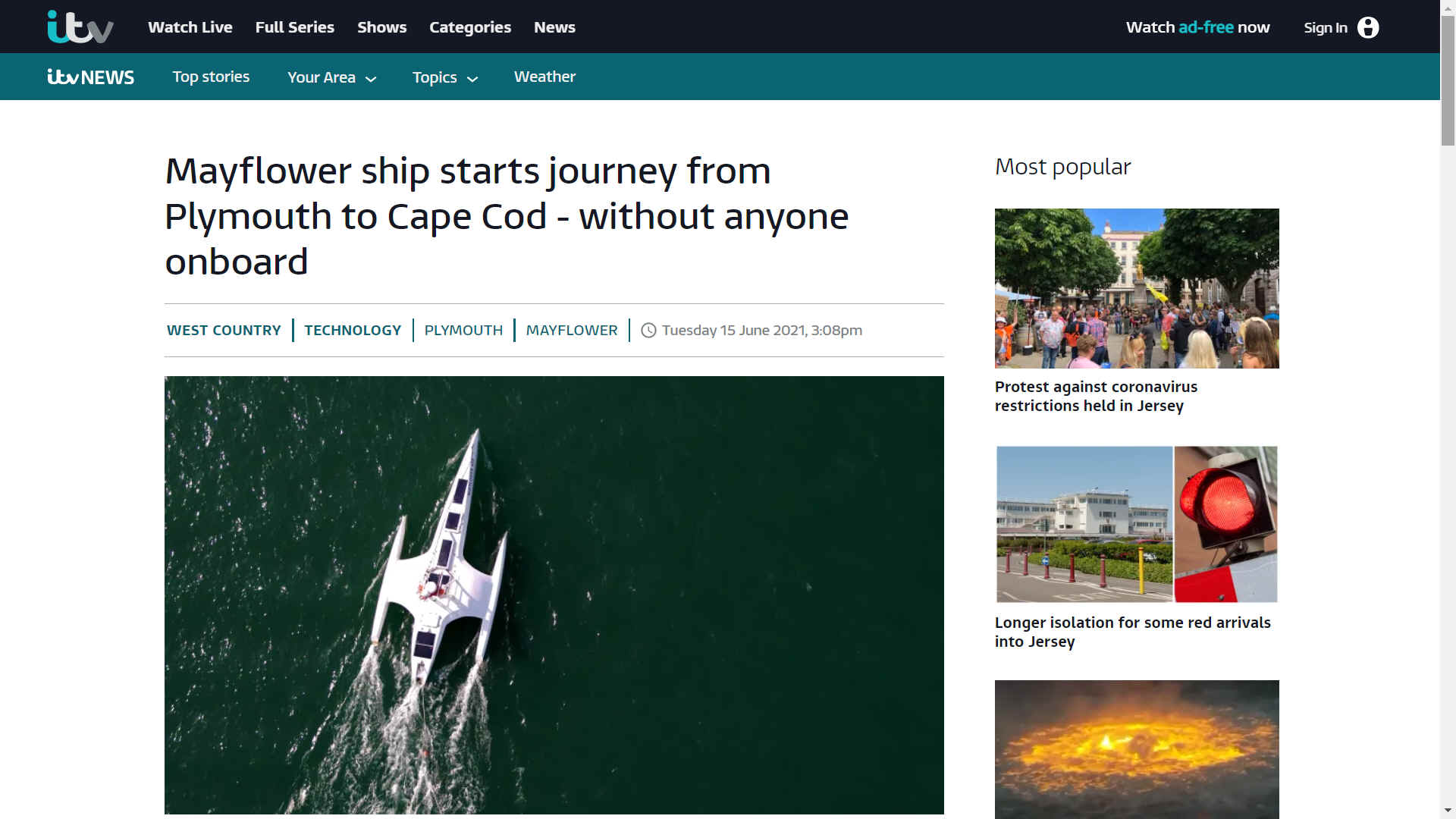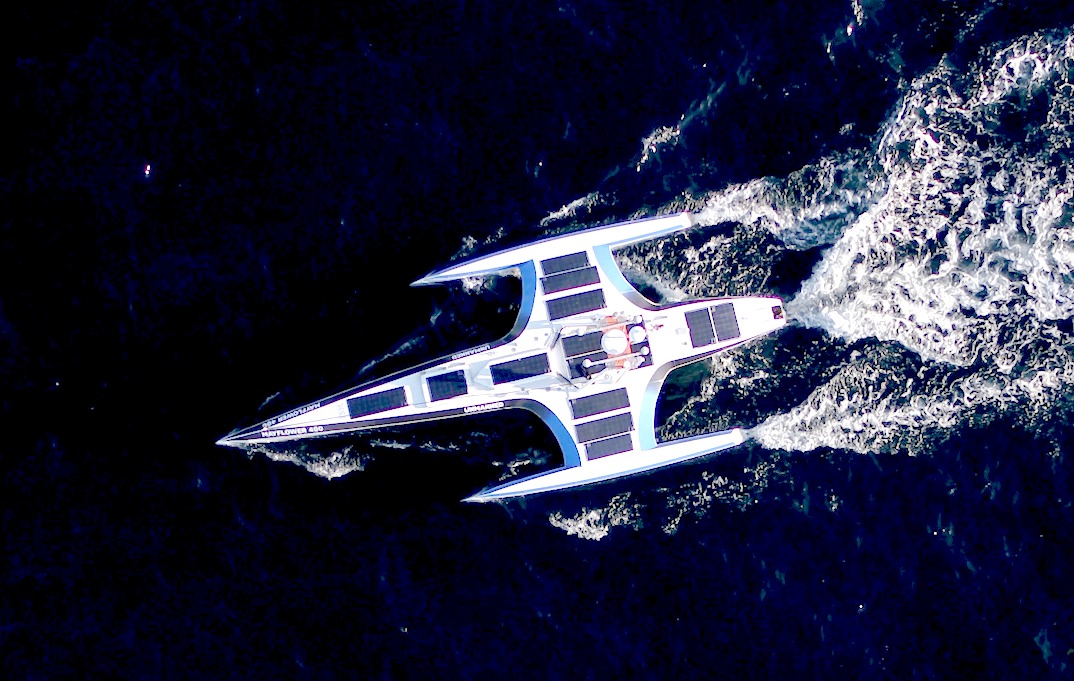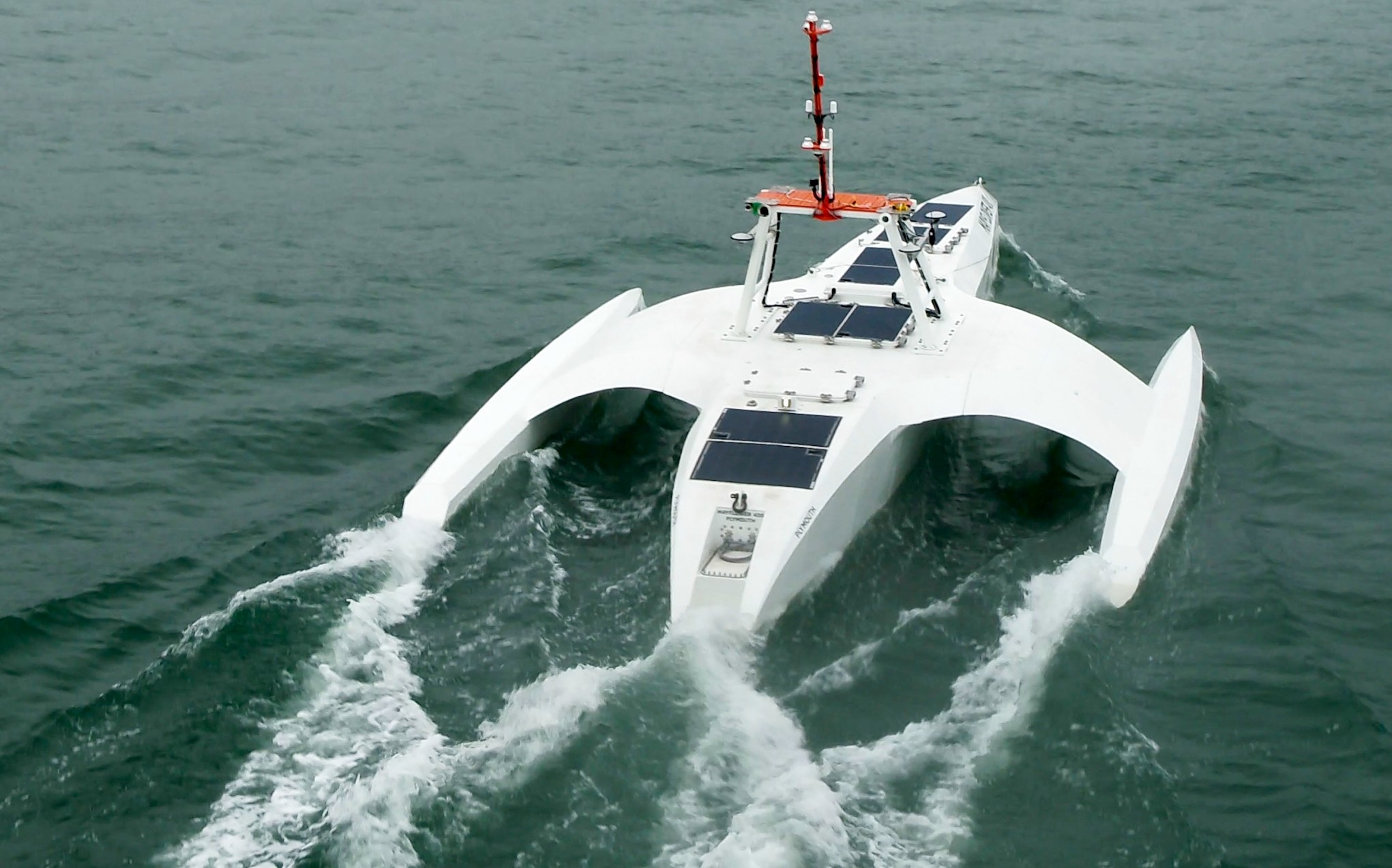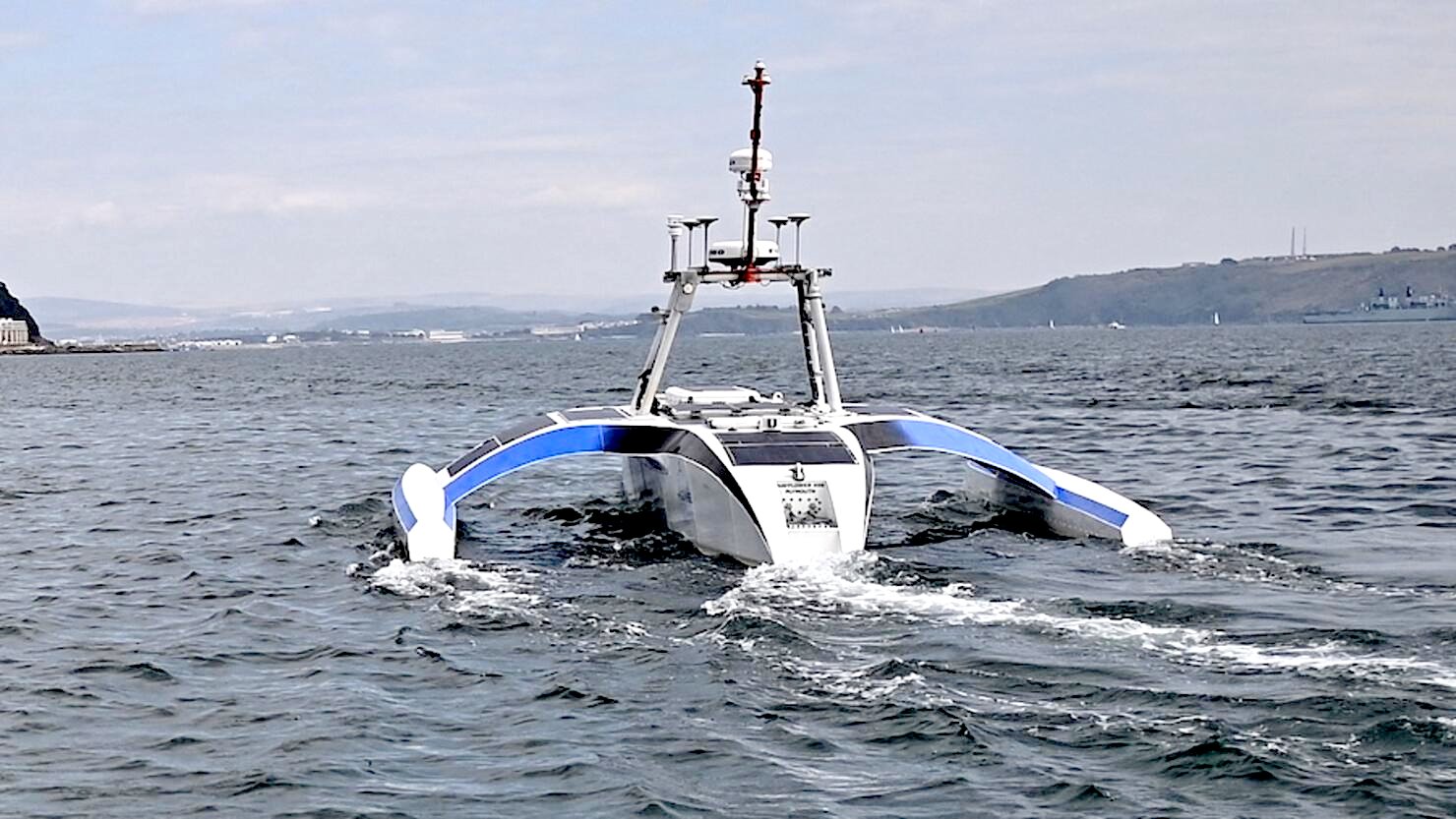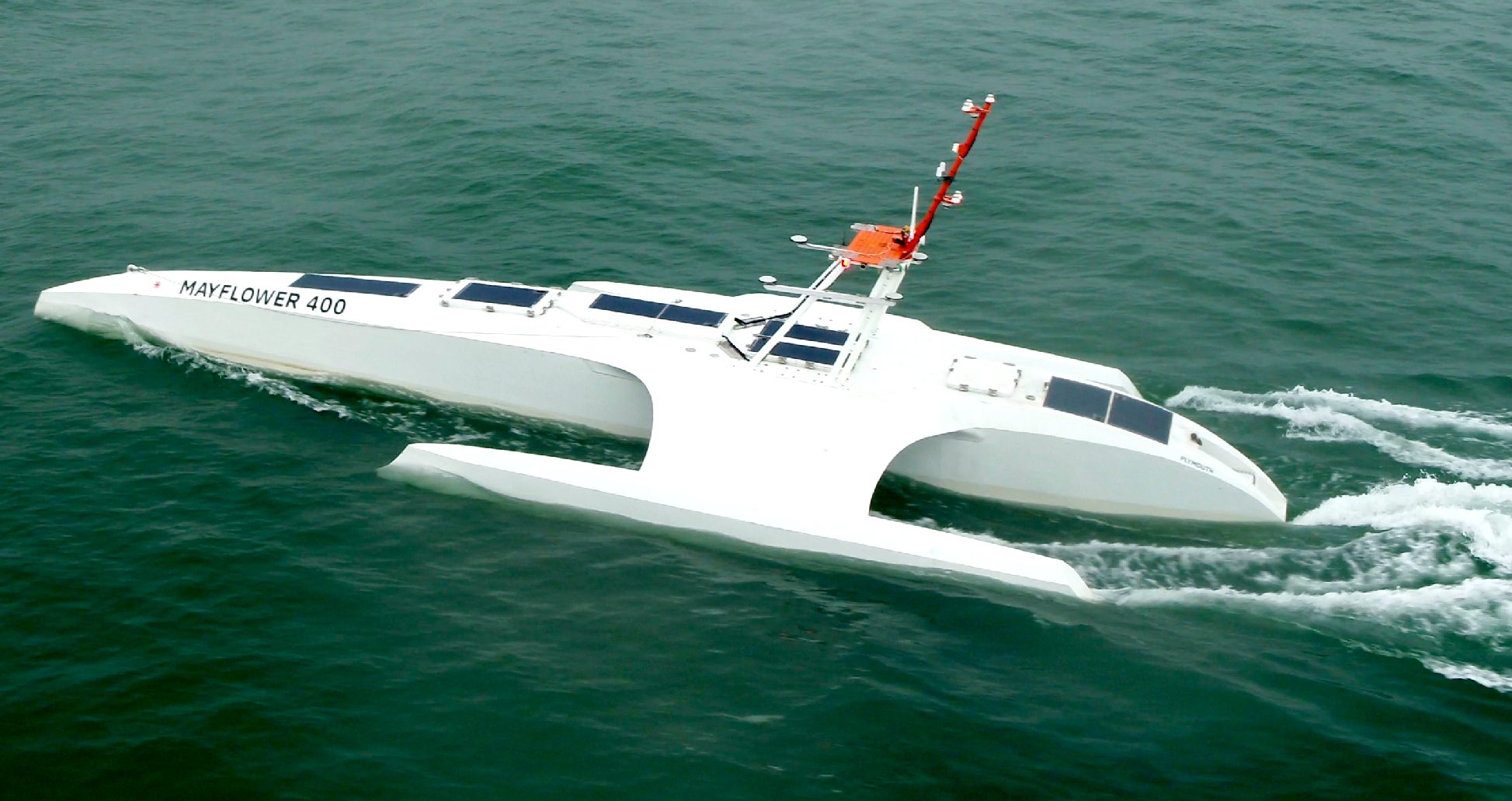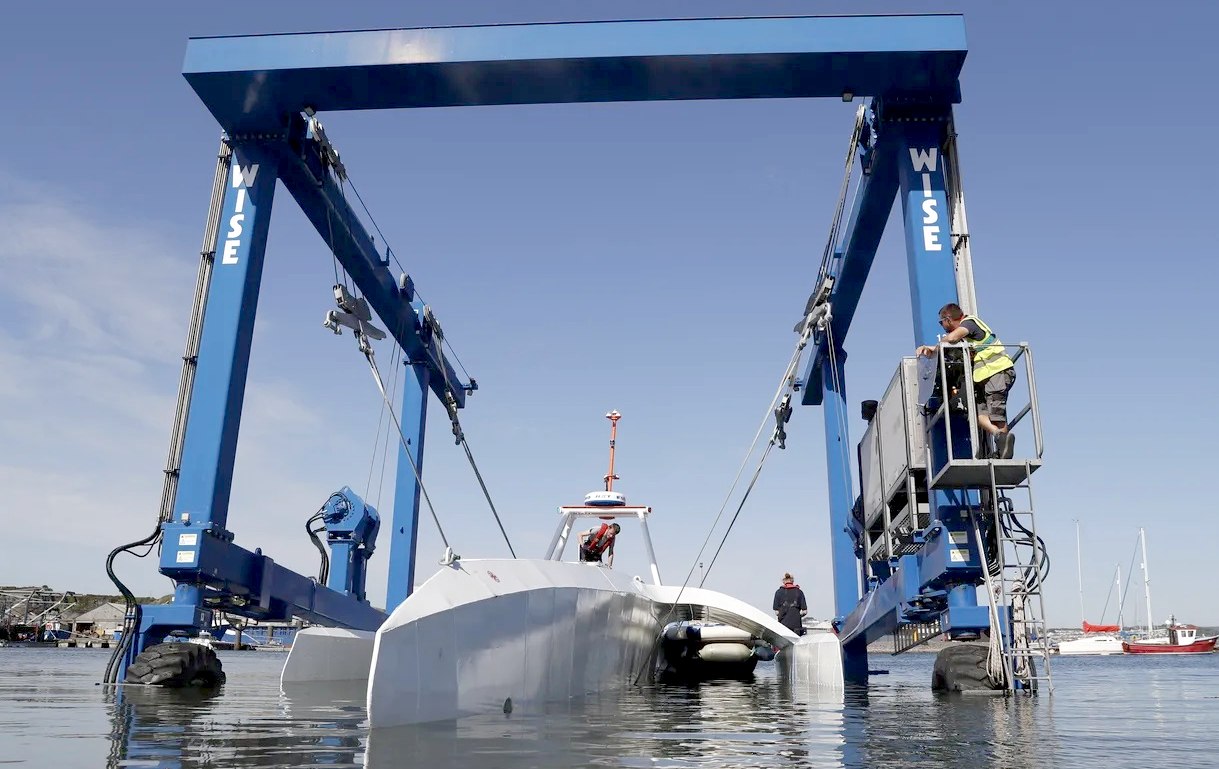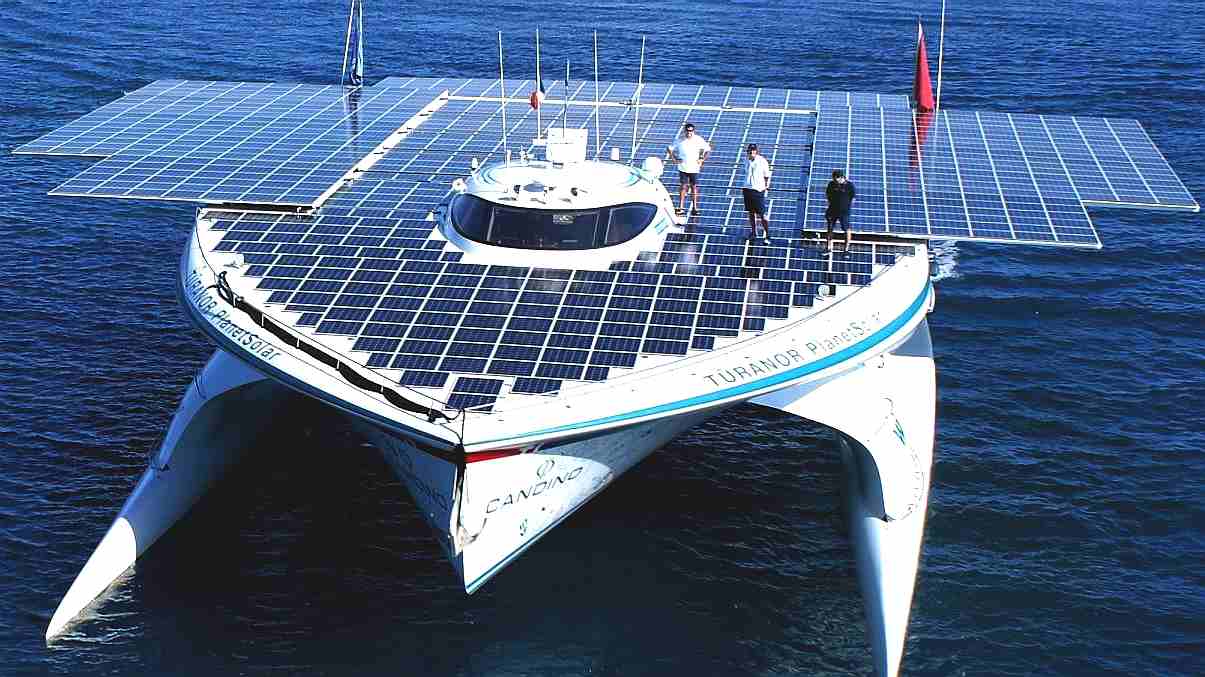|
Please use our A-Z INDEX to navigate this site or return HOME
|
|||||||||||||||||||||||||||||||||||||||||||||||||||||||||||||||||||||||||||||||||||||||||||||||||||||
MAYFLOWER ATLANTIC VOYAGE - The Mayflower's direction of travel is the reverse of the Scout and Voyager autonomous Atlantic attempts that took advantage of trade winds. The Mayflower will be heading into prevailing winds and currents. If sail powered, she would need to tack. But powered by a diesel engine, with support from the deck mounted solar panels, there may be no need for that - except, that we saw her struggling when out at sea. Energy from nature is used to power the onboard AI and satellite comms. Many media reports inaccurately refer to wind power as a feature of the MAS, but you can plainly see that there is no wind turbine or wing-sail. Lidar, Cameras and Radar are commonly used to navigate reaper drones, robotaxis and driver-less trucks. There is no reason why such a system should not perform well on the high seas.
MORE SOLAR PANELS - The solar panel array has roughly doubled since launch in September 2021. Even so, electricity generating performance will be limited, compared to PlanetSolar's array totalling some 537 m2. The Mayflower has a more efficient hull in principle, being a trimaran with less windage. Meaning that she will require less energy pro-rata.
Two
ships carrying Pilgrims left Plymouth bound for America; Mayflower and
Speedwell. Speedwell was in bad repair and kept taking on water despite
repairs, and never made it to the U.S. Mayflower was built in Harwich,
an armed merchant vessel boasting three masts that were 30 metres tall and up to 7,5 metres in width.
Despite adverse weather, she made it across the Atlantic to found a
colony with the help of the indigenous Wampanoag, skilled farmers,
hunters and fishermen. The native Americans helped the Pilgrims to find
their feet and found a thriving colony.
SOLAR POWER - The Mayflower was launched with this solar panel configuration in September 2020, seen here operating on batteries and a diesel engine, used as a backup generator.
MORE SOLAR POWER - The Mayflower is seen here with more solar panels added to her trimaran wings in July 2021, sporting new blue livery to accentuate the hull lines. The sponson legs are rigidly fixed on this ship, where, with a mast or wind turbine, as with the formula 1 racing yachts, it may be an advantage to have the capability of lifting the windward (upwind) leg that will not be taking displacement load, where the wind acting on a turbine, or raised solar panels (such as with the Elizabeth Swann), will push the boat leeward (downwind). By this means a vessel with such an 'active hull' might reduce wave drag - hence running resistance.
TRIMARAN - The Mayflower configuration is very much like the Cable & Wireless Adventurer that circumnavigated the world using a diesel engine, to set a new world record. The C&W was a Nigel Irens design, later used by Sea Shepherd in their quest to stop pirate whaling.
TRANSATLANTIC
EVENT CALENDAR 2021
The IBM Mayflower MAS 400 is an autonomous trimaran powered by solar panels and a diesel engine, piloted by an artificially intelligent computer system developed by IBM called 'AI Captain.'
JOURNEY
TIME
A BIT OF HISTORY
The first solar boat to travel around the world was the PlanetSolar, coming home on the 4th of May 2012. Computing power was not as advanced as it is today, when PlanetSolar set off on 27th September 2010. PlanetSolar approximately followed the Sunshine Route, a course first shown in London at the 1994/95 Boat Show. Then in January 2013 a patent specification for a COLREGs compliant, unmanned autonomous navigation system was filed by a BMS engineer (now our IP) with the suggestion in 'Claims' for using a solar powered trimaran (patent granted 12 June 2019) as a suitable hull configuration. This patent also included wind energy harvesting as originally advertised for the Mayflower 400.
LINKS, CONTACTS & REFERENCE
https://www.itv.com/news/westcountry/2021-06-15/mayflower-ship-starts-journey-from-plymouth-to-cape-cod-without-anyone-onboard
|
|||||||||||||||||||||||||||||||||||||||||||||||||||||||||||||||||||||||||||||||||||||||||||||||||||||
|
Please use our A-Z INDEX to navigate this site
This website is Copyright © 2021 Jameson Hunter Ltd
|
